The Tabernacle: How Does It Point to Christ’s Incarnation?
In the wilderness of Sinai, God commanded Moses to build a sanctuary unlike anything the world had seen before. This sacred tent—the Tabernacle—would serve as the centrepiece of Israel’s worship for generations. But was this elaborate structure merely an ancient place of worship, or did it hold deeper significance?
The Tabernacle was far more than temporary housing for sacred objects. It was a divinely designed blueprint that pointed forward to God’s ultimate plan: the incarnation of Jesus Christ. Let’s explore how this Old Testament sanctuary foreshadowed the coming of our Saviour in the flesh.
GOD DWELLING AMONG HIS PEOPLE
At its core, the Tabernacle represented something revolutionary: God choosing to dwell among His people. In Exodus 25:8, God declares His purpose: “Let them make me a sanctuary, that I may dwell in their midst.” This dwelling was not merely symbolic but real, with God’s glory visibly manifesting in the cloud that settled over the Most Holy Place.
This foreshadowed something even more remarkable. When John describes Christ’s incarnation, he deliberately echoes Tabernacle language: “The Word became flesh and dwelt among us” (John 1:14). The Greek word used here, eskēnōsen, literally means “tabernacled” or “pitched his tent.” What the Tabernacle prefigured, Christ fulfilled—God truly dwelling among His people, not in a tent of fabric, but in human flesh. This is Immanuel, “God with us” (Matthew 1:23), in its fullest expression.
THE VEIL AND CHRIST’S FLESH
Perhaps no element of the Tabernacle more powerfully foreshadows Christ’s incarnation than the veil separating the Holy Place from the Most Holy Place. This ornate curtain represented the separation between God and humanity caused by sin. Only the High Priest could pass through this barrier, and only once a year on the Day of Atonement.
In the New Testament, the writer of Hebrews makes an explicit connection between the veil and Christ’s physical body: “Therefore, brothers, since we have confidence to enter the holy places by the blood of Jesus, by the new and living way that he opened for us through the curtain, that is, through his flesh…” (Hebrews 10:19-20). Christ’s incarnate body became the means by which we now access God’s presence.
This connection is dramatically confirmed at Christ’s crucifixion when “the curtain of the temple was torn in two, from top to bottom” (Matthew 27:51). The rending of Christ’s flesh in death tore open the way to God, fulfilling what the Tabernacle’s veil had long symbolized.
THE ARK OF THE COVENANT AND CHRIST’S PERSON
At the heart of the Tabernacle stood the Ark of the Covenant, containing three significant items: the tablets of the Law, a jar of manna, and Aaron’s rod that budded. Each element foreshadowed an aspect of Christ’s incarnate person and work:
- The Law: While Israel repeatedly failed to keep God’s commandments, Christ declared, “Do not think that I have come to abolish the Law or the Prophets… but to fulfil them” (Matthew 5:17). In His incarnation, Jesus perfectly embodied and obeyed God’s law—the only human ever to do so.
- The Manna: This bread from heaven sustained Israel in the wilderness. Jesus explicitly connected this to Himself: “I am the living bread that came down from heaven. If anyone eats of this bread, he will live forever. And the bread that I will give for the life of the world is my flesh” (John 6:51). Christ’s incarnation provided the true bread that gives eternal life.
- Aaron’s Rod: This dead staff miraculously budded, blossomed, and produced almonds, confirming Aaron’s priesthood. Similarly, Christ’s resurrection validated His ministry and priesthood. His body, though dead, burst forth with resurrection life, demonstrating God’s endorsement of His sacrifice.
Above these treasures sat the mercy seat, where blood was sprinkled for atonement—foreshadowing how Christ would become our “propitiation” (Romans 3:25), the one who turns away God’s wrath through His blood.
THE SACRIFICIAL SYSTEM AND CHRIST’S INCARNATION
The bronze altar with its endless animal sacrifices pointed to a fundamental truth: atonement requires blood and death. Yet these sacrifices could never fully remove sin (Hebrews 10:4). For true atonement, something more was needed—the incarnation of Christ.
Hebrews explains why Christ’s taking on human flesh was necessary: “Since therefore the children share in flesh and blood, he himself likewise partook of the same things… Therefore he had to be made like his brothers in every respect, so that he might become a merciful and faithful high priest… to make propitiation for the sins of the people” (Hebrews 2:14-17).
The entire sacrificial system anticipated this truth—that God Himself would need to become flesh to offer the perfect sacrifice. What countless animals could never accomplish, Christ achieved through His incarnate life and death.
THE LAMPSTAND AND CHRIST AS LIGHT
In the Holy Place stood the golden lampstand with its seven branches, providing the only light in that sacred space. This too pointed to Christ, who declared, “I am the light of the world. Whoever follows me will not walk in darkness, but will have the light of life” (John 8:12).
The incarnation brought divine light directly into human darkness. As John writes, “In him was life, and the life was the light of men. The light shines in the darkness, and the darkness has not overcome it” (John 1:4-5). What the lampstand symbolized—God’s illuminating presence—Christ embodied in His incarnate person.
THE SUPERIOR REALITY
From a Reformed perspective, these connections between the Tabernacle and Christ’s incarnation aren’t mere coincidences or creative interpretations. They reflect God’s intentional design—what theologians call “typology.” The physical Tabernacle was always meant to point beyond itself to Christ. CHECK OUT OUR POST: Types of Christ and His Cross in the Old Testament
As Calvin observed, the Old Testament believers saw through a glass darkly what we now see face to face in Christ. The Tabernacle provided shadows; Christ brought substance. The physical sanctuary offered temporary, symbolic access to God; the incarnation opened the way for permanent, direct communion.
The writer of Hebrews summarises this theological principle: “They serve a copy and shadow of the heavenly things” (Hebrews 8:5). The Tabernacle was the shadow; Christ is the reality to which it pointed.
CONCLUSION: SEEING CHRIST IN THE TABERNACLE
When we understand how the Tabernacle foreshadowed Christ’s incarnation, both come alive with new meaning. The elaborate details of the sanctuary reveal God’s meticulous preparation for the coming of His Son. The incarnation, in turn, fulfils and exceeds everything the Tabernacle represented.
This connection challenges us to worship Christ as the true Tabernacle—God’s ultimate dwelling place among us. It reminds us access to God has been secured not through ritual or religious spaces, but through the flesh and blood of Jesus Christ.
The God who once dwelt behind veils now invites us to approach with confidence through Christ. The pattern shown to Moses on the mountain finds its perfect fulfillment in the One who came down from heaven and made His dwelling among us.
For in him the whole fullness of deity dwells bodily. —Colossians 2:9
RELATED FAQs
How does the Tabernacle’s construction material point to Christ’s incarnation? The acacia wood overlaid with gold in the Tabernacle’s construction symbolises Christ’s dual nature—human and divine. As Herman Bavinck noted, “The incarnation is not the conversion of God into flesh, but the taking on of humanity by God.” This imagery of two distinct materials united as one beautifully foreshadows how in Christ, full divinity and full humanity would exist in one person.
- Did the Tabernacle’s mobility have significance for understanding Christ’s incarnation? The portable nature of the Tabernacle foreshadowed how Christ would not be confined to one location but would minister throughout Israel. As Geerhardus Vos observed, “The tabernacle’s movement through the wilderness prefigured Christ’s movement among us—God’s presence not stationary but accompanying His people wherever they went.” Christ’s incarnation brought God’s presence into everyday life, not restricted to a single sacred space.
- How does the Eastern orientation of the Tabernacle connect to Christ? The Tabernacle entrance faced east, toward the rising sun, anticipating Christ who would be called “the sunrise from on high” (Luke 1:78). Edmund Clowney wrote, “The eastward orientation of the Tabernacle signalled hope—Israel awaited the dawn of God’s redemption just as we await the dawn of Christ’s return.” This orientation reminded Israel to look forward in hope to the coming Messiah.
What significance did the Tabernacle’s measurements and proportions have for Christ’s incarnation? Many Reformed scholars see the precise measurements as reflecting God’s perfect design and order that would be fulfilled in Christ. As Jonathan Edwards suggested, “The exactness of the Tabernacle’s dimensions demonstrates God’s precise planning in redemptive history, culminating in the incarnation of Christ.” These divine specifications remind us the incarnation wasn’t an afterthought but God’s perfect plan from the beginning.
- How did the cloud covering the Tabernacle foreshadow aspects of Christ’s incarnation? The cloud that covered the Tabernacle provided both revelation and concealment of God’s glory—showing God’s presence while shielding Israel from His full glory. John Calvin wrote, “What was partially disclosed in the cloud was fully revealed in Christ, who veiled His divine glory in human flesh that we might behold Him without being consumed.” Christ’s incarnation similarly reveals God while accommodating to our human limitations.
- Why was the Tabernacle temporary, and what does this teach us about Christ? The temporary nature of the Tabernacle (later replaced by the Temple) pointed to its provisional status as a type awaiting fulfillment. Michael Horton explains, “The provisional character of the Tabernacle anticipates the climactic revelation in Christ, who did not merely represent God temporarily but is God with us permanently.” Christ’s incarnation wasn’t temporary but established an eternal union between God and humanity.
How does the Tabernacle’s consecration ceremony relate to Christ’s incarnation? The elaborate consecration of the Tabernacle with blood and oil foreshadowed Christ’s baptism and anointing with the Spirit at the beginning of His ministry. Abraham Kuyper observed, “As the Tabernacle required consecration before God would dwell there, so Christ was anointed by the Spirit, marking the official beginning of God dwelling among us in human flesh.” This consecration demonstrated divine authorisation of both the Tabernacle and Christ’s incarnate ministry.
OUR RELATED POSTS
Editor's Pick

Should We Stop Using Male Pronouns for God? Why Do We Say No?
A friend of ours arrived eagerly at his first theology class in seminary. But he quickly discovered something troubling: the [...]
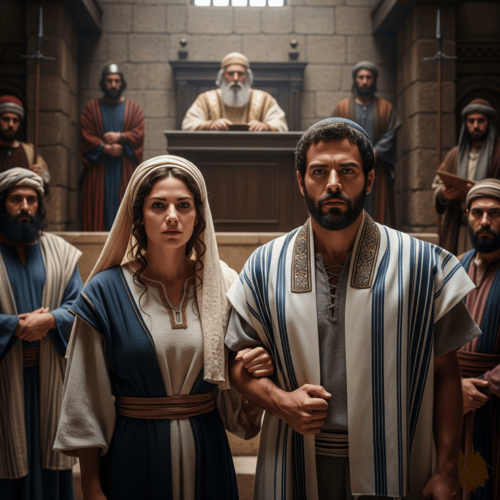
Did Old Testament Law Force Women to Marry their Rapists?
**Editor’s Note: This post is part of our series, ‘Satan’s Lies: Common Deceptions in the Church Today’… Viral misinformation abounds [...]

From Danvers To Nashville: Two Statements, One Biblical Vision
30 years separate the Danvers Statement on Biblical Manhood and Womanhood (1987) and the Nashville Statement on Human Sexuality (2017). [...]

The Nashville Statement: Why Affirm It Despite Media Backlash?
WHY DO REFORMED CHRISTIANS STAND BY THIS STATEMENT ON MARRIAGE AND GENDER? When the Nashville Statement was released in 2017, [...]
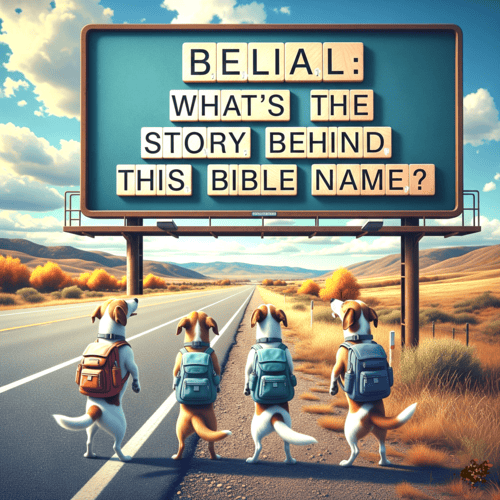
Who Is Belial? Solving The 2 Corinthians 6:15 Mystery
Belial: This name from the pages of Scripture chills the soul. Who is this mysterious figure Paul invokes in 2 [...]

Celibacy Or Castration: What Jesus Really Means in Matthew 19:12
One of Scripture's most shocking misinterpretations led theologian Origen to castrate himself in the third century. His tragic mistake? Taking [...]

Philippians 4:13: Did Paul Really Mean We Can Do ALL Things?
"I can do all things through Christ who strengthens me." It's on gym walls, graduation cards, and motivational posters everywhere. [...]
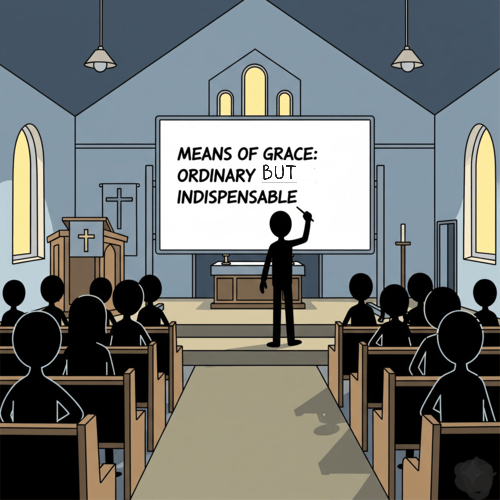
The Ordinary Means of Grace: Why Are They Indispensable?
ORDINARY MEANS FOR EXTRAORDINARY TRANSFORMATION What if God's most powerful work in believers' lives happens through the most ordinary activities? [...]
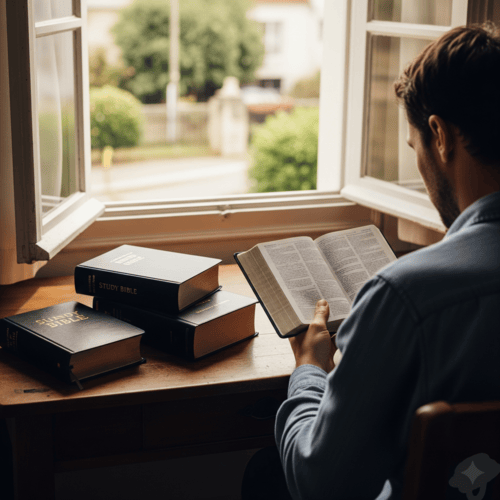
Is the Bible God’s Word? Or Does It Only Contain God’s Word?
The authority of Scripture stands at the crossroads of modern Christianity. While some argue the Bible merely contains God’s Word [...]
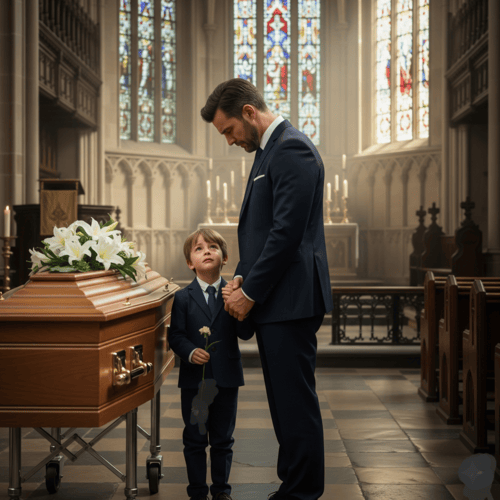
Will We Remember This Life in Heaven? What Isaiah 65:17 Means
"Will I remember my spouse in heaven? My children? Will the joy we shared on earth matter in eternity?" These [...]
SUPPORT US:
Feel the Holy Spirit's gentle nudge to partner with us?
Donate Online:
Account Name: TRUTHS TO DIE FOR FOUNDATION
Account Number: 10243565459
Bank IFSC: IDFB0043391
Bank Name: IDFC FIRST BANK






